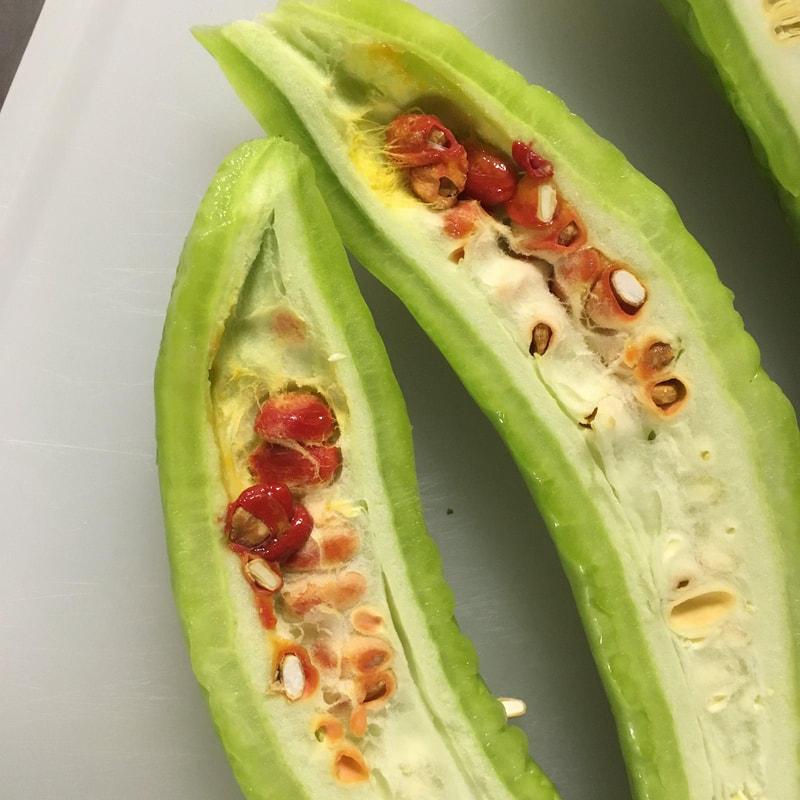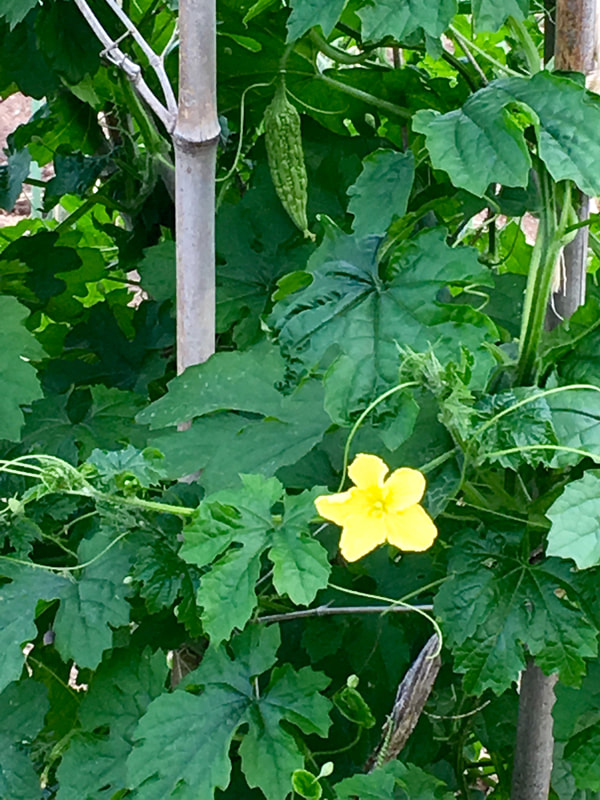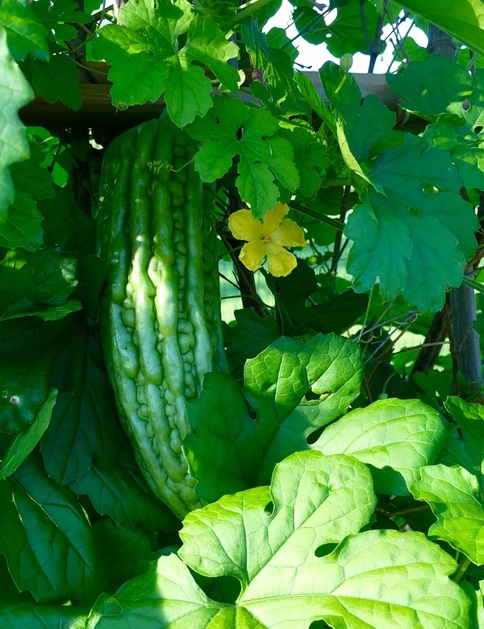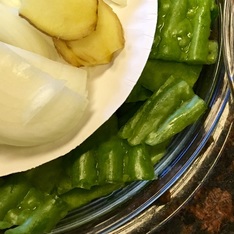|
Have you ever cut into a bitter melon and found bright red goop inside? Yes, it is edible!
The bitter melon is nicknamed "magic melon" because of numerous health benefits (see last week's post), but I think the transformation that happens inside as the fruit matures is also a bit magical. As you may know, the usable part of the bitter melon is the green, bumpy outside part. See the spongy white part inside? We scoop it out and discard it. However, as the melon matures, the spongy white stuff turns into goopy red stuff and here's the best part - it's sweet! It's always a fun surprise to cut open a bitter melon to find the insides have begun to turn red. The texture is a bit like roasted red pepper and it is sweet and edible. Just be sure to spit out the seeds when enjoying this little treat!
17 Comments
Can you see the small bitter melon growing near the top of the photo? We grow it because it tastes good (really!), but what a lot of people know now, is that it's very healthful as well.
Research has shown that bitter melon contains a chemical that is similar to insulin, which helps to reduce blood sugar levels. While several years ago, the majority of participants at my talks and workshops had not heard of bitter melon, today, a good 75% have. A few participants have been advised by their doctors and nutritionists to add bitter melon (in vegetable or pill form) to their diets to help with diabetes. Many people have told me they don't mind the bitter taste, and many have even mentioned that they enjoy the cooling bitterness. One person told me she adds bitter melon to her green juices and does not even taste it - I find this hard to believe, but she insisted! It might be similar to kale in that when juiced with fruits, it blends in with the rest of the sweet, fruity flavors. Bitter melon is also known to ease stomach and digestive issues, fever and skin problems. With all these health benefits, it's something everyone ought to try once. You may just end up loving it! *If you're curious about adding bitter melon to your diet to help with a medical condition, speak with your doctor or nutritionist for suggestions about dosages. **If you're curious about adding this delicious vegetable to your diet because you want to see what all the fuss is about, try the recipe in The Chinese Kitchen Garden. The strong flavors of garlic and fermented black beans balance the bitterness of the bitter melon and result a savory and hearty meal served over rice.
|
AuthorI'm Wendy Kiang-Spray, gardener, home cook, and author of The Chinese Kitchen Garden. Learn more about the book here. Enjoy the blog and be sure to like The Chinese Kitchen Garden Facebook page for notifications when there are new posts. Archives
April 2019
Categories
All
|





 RSS Feed
RSS Feed